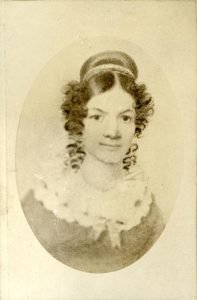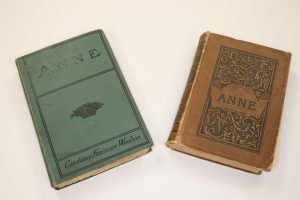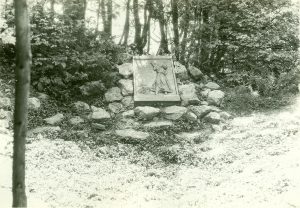By Maria Bur
For decades, Mackinac Island and the Straits area has been a rich source of inspiration for writers. Some literary ties remain well remembered, like Herman Mellville calling Mackinac by name in Moby-Dick, while others fade and are largely forgotten in time.
Two such 19th century women writers, long overlooked compared to their male contemporaries, nevertheless also took inspiration from Mackinac’s one-of-a-kind scenery and made notable, even remarkable contributions to literature.


It is only in recent years that the private writings of Jane Johnston Schoolcraft have been uncovered and recognized for the accomplishment they are. History better remembers her husband Henry Schoolcraft, a geographer, ethnologist, and United States Indian agent for Michigan beginning in 1822. He made a career studying American Indian tribes. But it’s the poetry and translations of his wife Jane, a Métis, or mixed Ojibwe and Scotch-Irish woman, that have just as much to say about Ojibwe life, culture, and womanhood in the 19th century.
As a woman straddling two different cultures, Schoolcraft took inspiration from places like Mackinac Island, where she lived for most of the 1830s, and from her Ojibwe heritage to craft collections of poetry in English and Ojibwe, wrote, in English, at least eight traditional Ojibwe stories, and transcribed and translated a variety of other Ojibwe tales.
Schoolcraft is among the first American Indian writers, the first known Indian woman writer, by some measures the first Indian woman poet, as well as the first to write poems in a Native American language. Recent scholarship has even determined that Schoolcraft’s Ojibwe tales served as inspiration for Henry Wadsworth Longfellow’s The Song of Hiawatha.


Woolson spent portions of her childhood and young adulthood in the midwest and on Mackinac Island, which is where several of her short stories and novels are set.
Of particular note is Anne, an 1880 novel published first as a serialization in Harper’s New Monthly Magazine, is partially set on the island. In Anne the protagonist begins her journey in her village on Mackinac Island headed for the northeastern United States, only to return home at the end to familiar ground. Forever known for her picturesque and vibrant descriptions of the natural world, Woolson’s Anne pays fitting homage to Mackinac Island.


Although she’s little more than a footnote in 19th century literature, Woolson’s legacy remains alive on Mackinac Island in the form of a bronze plaque located within Mackinac Island State Park next to Fort Mackinac. Overlooking a bluff, part of the plaque dedicated in 1916 honors Woolson for “her love of this island and its beauty in the words of her heroine, Anne.”
Maria Bur is a freelance writer and graduate of Saginaw Valley State University. She enjoys writing about women’s history, literature, media, and culture.








